Faculty Job: Myths & Realities – an interview with Cătălin Voiniciuc
About you
·
Describe your journey from student to newly appointed faculty
PROFESSIONAL DEVELOPMENT
Group Leader, Designer Glycans lab – (since 01.2019)
Research Associate, Markus Pauly lab – (05.2016 – 12.2018)
Postdoctoral Researcher, Björn Usadel lab – (02.2016 – 04.2016)
PhD Researcher, Björn Usadel lab – (12.2012 – 01.2016)
Visiting Doctoral Student, Helen North lab – (03.2014 – 04.2014)
Research Assistant/Technician 2, George Haughn lab – (09.2011 – 11.2012)
Graduate Research Assistant, George Haughn lab – (09.2010 – 08.2012)
Undergraduate Researcher, George Haughn lab – (05.2010 – 08.2010)
Assistant Curator (Marine Invertebrates), Beaty Biodiversity Museum – (06.2008 – 04.2010)
I was born in Romania, and moved to Vancouver (Canada) as a teenager. During my B.Sc. degree at the University of British Columbia (UBC), I gained a solid theoretical foundation in the natural sciences and became particularly interested in biology. Although I also enjoyed working with invertebrates, I quickly fell in love with plant research. Impressed by the lectures of Dr. George Haughn on the power of Arabidopsis thaliana forward genetic screens to decipher complex biological processes such was floral organ morphogenesis, I asked to do an internship in his lab. This great experience introduced me to Arabidopsis seed mucilage, an excellent genetic model for plant cell walls, which I have since used extensively to decipher the synthesis and function of plant polysaccharides. Thanks to an undergraduate summer research award, and the possibility to continue as a M.Sc. student, I embarked on an exciting journey to study a mucilage mutant called flying saucer1 (fly1), whose seeds released unusual carbohydrate discs. In collaboration with researchers at the University of California, San Diego, I showed that FLY1 is a transmembrane E3 ubiquitin ligase that controls pectin gelling properties (Voiniciuc et al., 2013). In the fly1 mutant, the mucilage extrudes with difficulty and adheres more tightly to seeds relative to the wild type. Of almost 500 Arabidopsis putative E3 ligases, only a few had known biological roles and none were previously shown to only affect cell wall structure. Thus, FLY1 revealed intriguing connections between wall cohesiveness and ubiquitination.
To broad my scientific and cultural horizons, I decided to pursue my doctoral research in Europe. Germany became my destination of choice once I met Dr. Björn Usadel, then a group leader at the Max Planck Institute of Molecular Plant Physiology, while he visited UBC. As recently highlighted by Nature (https://www.nature.com/articles/d41586-019-00912-5), Germany offers many benefits for international scientists. Shortly before I joined the Usadel lab, the group had moved to RWTH Aachen University and Forschungszentrum Jülich, one of the largest research centers on the continent. Although I initially explored natural variation in barley cell wall traits, I missed the genetic tools available for Arabidopsis and ultimately decided to conduct a comprehensive screen for MUCILAGE-RELATED (MUCI) genes that directly control polysaccharide architecture. After three productive years in Jülich, I moved 60 km north to join the newly established department of Dr. Markus Pauly, who had relocated from the University of California, Berkeley to Heinrich Heine University Düsseldorf. Here, I was responsible for establishing a synthetic biology team focused on producing cell wall polysaccharides in plants and yeast hosts. During my two and half years in Düsseldorf, I benefited from an inspiring atmosphere and extensive mentorship that helped me take the finals steps required to obtain a faculty position. Since January 2019, I lead an independent research group at the Leibniz Institute of Plant Biochemistry (IPB) in the beautiful city of Halle.
What is the major focus of you research team?
My research group at IPB Halle focuses on the plant cell wall polysaccharides. Plant cell walls primarily consist of cellulose microfibrils cross-linked by hemicellulose and, to a lesser extent, pectin. Junctions between these distinct classes of polysaccharides govern the biomechanical properties of the wall. Heteromannan (HM) is regarded as the most ancient hemicellulose, and is found throughout the plant kingdom. Despite their widespread distribution, the biosynthesis of HM polysaccharides has been grossly understudied relative to other plant cell wall components. HM extracted from plant seeds serves as an environmentally-friendly thickener in foods, cosmetics, and in many other industries. Although the genomics era has ushered the identification of multiple genes involved in HM biosynthesis, most of them remain to be functionally characterized. My lab applies synthetic biology tools to gain mechanistic insight into HM biosynthesis, using yeast (such as Pichia pastoris) and Arabidopsis thaliana seed mucilage as model systems. For example, yeast cells lack hemicelluloses, but can be rapidly engineered to accumulate large amounts of HM by expressing plant glycosyltransferases (Voiniciuc et al., 2019; PNAS).
Which conferences do you regularly attend?
I regularly attend the international meetings on plant cell walls. The next one will take place this summer (July 7-12) at the University of Cambridge (https://cellwall2019.org), where I look forward to presenting the latest research findings of my lab. In the past years, I also enjoyed participating in Arabidopsis (ICAR) meetings and the Gordon Research Conference on Synthetic Biology, which sadly conflicts with the cell wall meeting this year.
Who are your current collaborators?
In the last six years, I established fruitful collaborations with plant biologists in North America and Europe, including labs located in San Diego and Berkeley (California), Athens (Georgia), Chapel Hill (North Carolina), Lausanne (Switzerland), Versailles and Nantes (France). I am currently exploring new collaborations with several research teams in Germany and abroad who are also interested in plant cell walls and have complementary expertise. In addition to ongoing projects with the labs of Björn Usadel and Markus Pauly, my team is starting to work closely with several groups in the Molecular Signal Processing department (https://www.ipb-halle.de/en/research/molecular-signal-processing/) at IPB Halle, and with plants scientists at the Martin Luther University of Halle-Wittenberg.
About your job hunt
·
How long did it take you from the beginning of searching faculty jobs to get one?
I started applying for faculty jobs in spring 2018, and officially started my independent research group on the first day of 2019, so a lot has happened in the last 12 months. I was fortunate that several faculty positions that fit well my research experience and interests became available at this time, so there were multiple interesting opportunities to apply for. I was delighted with the offer to join IPB Halle, which is a member of the Leibniz Association. Since IPB is a non-university research institute, the recruitment process moved very quickly in comparison to what can be typically expected in a university setting.
Based on your experiences and the feedback you got during the job search, what do you think are key skills and accomplishments that a successful candidate must demonstrate?
A successful application requires a lot of advance preparation, but serendipity can also play a big role. In my opinion, a young principal investigator should not be simply a scientist with an excellent publication record and a compelling research plan. Being able to successfully manage a team and to train the next generation of researchers is equally important. I regularly reflect on my own scientific performance, how to become more efficient in the lab and to inspire students to become successful. Prior experience in supervising students and their achievements (eg. scientific co-authorship) therefore strengthened my application.
In total, I only applied for a handful of carefully selected positions, and I took the time to consider how my work fits with the research of each institution that. I thought about potential collaborations with existing labs. and mentioned these in my application documents as well as during the on-site interview. It can be an asset to have already discussed project ideas with potential collaborators beforehand (certainly with your past advisors if there is overlap), and to be familiar with collaborative grants or funding schemes that are already available.
Each interview features a seminar presentation that should be memorable and highlight your key accomplishments and independent research vision, without overwhelming the audience with too much data. Finally, it is important to critically assess the available facilities and to be prepared to mention and justify the major equipment that is still needed for your research.
Which published paper was the most influential for your career or getting the faculty job?
I do not think that there is a particular publication that made the difference for me, although as a student, I was proud to see my M.Sc. research featured on the Plant Cell cover page. In contrast to other qualified applicants, I do not have any Cell/Nature/Science publications. However, I consistently published in the top journals for plant biology and out of 17 peer-reviewed publications, I am the first author of 11 and the corresponding author of 7 of them. This demonstrates scientific independence and consistency, rather than a one-hit wonder.
Advice for job applicants
Beyond your research and publications, how did you prepare for the academic job hunt during your postdoc?
I found it extremely valuable to meet and talk to people who were already a step ahead of me in the academic ladder. There are many paths to a faculty position, and I benefited from hearing multiple perspectives. I remain grateful to all the group leaders, particularly in Düsseldorf, who spoke openly about their experience and shared their valuable advice with me.
Prior to applying for faculty positions, I completed a year-long Academic Career Development Programme to professionalize my leadership and management skills. This was an amazing experience, including a workshop on applying for a professorship that helped polish my application. If such courses are not available at your institution, or to supplement them, I also recommend the following two books and reading additional free guides/blogs online.
1. The Academic Job Search Handbook
2. Managing Scientists: Leadership Strategies in Scientific Research
How did you prepare for the actual job hunt? How did you identify potential opportunities, prepare your application materials, and prepare for interviews?
Practice faculty interviews in front of your peers or by recording a video of your presentation. This will build confidence, and help you improve aspects that you might otherwise overlook. In addition, writing and submitting a full grant proposal as the sole principal investigator is an excellent preparation for a faculty application, not only in obtaining third party funding.
About you as a faculty member
What were the initial challenges to starting your own lab?
Equipping and staffing the lab were my top priorities to start a successful research group. Before moving, I was busy for several months with planning the big equipment orders and recruiting candidates. Now, four months after moving to IPB Halle and with the gradual arrival of the first five group members, I have been busy organizing the lab and training the everyone (individually as well as in a group setting) to get their projects underway. This is a time-consuming process but is important for the long-term success of the group. Fortunately, all the essential techniques and facilities (eg. for plant growth) have now been established.
What qualities do you look for when recruiting for your lab?
First, I assess the cover letters and CVs of the applicants to determine if their education and previous research experience match the skills required to successfully complete the project outlined in the job posting. My group combines genetic engineering of yeast and plants with carbohydrate biochemistry so expertise with relevant techniques and/or a genuine interest to learn more is essential. After a short meeting (typically on Skype) to discuss some specific details about the project(s) available in my lab and their experience, the top candidates are asked to prepare a project proposal. This serves an excellent tool to assess the interest of the applicant, their communication skills as well as their understanding of the topic. It also gives the candidate more insight about the research project. I also found it useful to speak with previous advisors about the strengths of the candidates, and what professional aspects they should improve in the next stage of their career. The combination of a well-written proposal, detailed feedback from the referees, and fruitful discussions during the personal interview has so far yielded a compelling candidate for each position that I advertised.
How do you manage “work-life balance” as a faculty?
In general, Germany offers many great benefits for parents and public employees, which includes most scientists. This is very important to me, as I have been balancing family life with the intensive demands of an academic career for several years. There is no secret formula (or at least I have not found it), but I believe in setting ambitious but achievable research targets every two months. I value scientific output, rather than the sheer numbers of hours someone works in the lab. Therefore, each group member completes the mutually agreed objectives according to their own schedule.
If prospective students and postdocs want to reach you, where can they contact you and read about your work?
For information about my research group or how to contact me, visit www.DesignerGlycans.com
You can also find me on twitter @cvoiniciuc


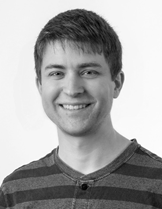
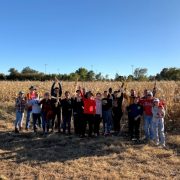
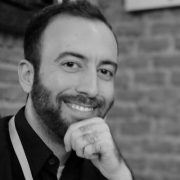
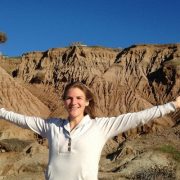
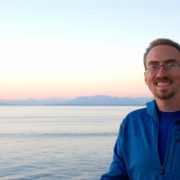
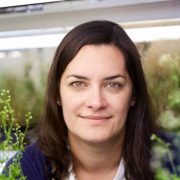
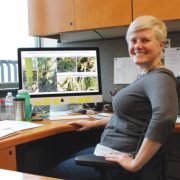
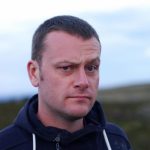
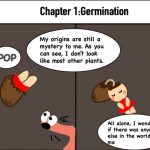
Leave a Reply
Want to join the discussion?Feel free to contribute!